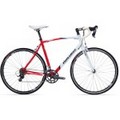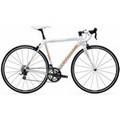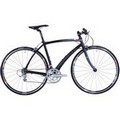How To Dress For the Weather?
That question even confuses an experienced bicycle tourist. The main reason for this is that when you are on the open road, you can never predict the weather from day to day. Even if you are planning on staying in nice hotels and having a ‘sag wagon’ carry your gear, you need to be prepared for whatever the weather throws at you. Cold hands and chest can spoil even the most enjoyable ride. So you need to be prepared.
I am adamant about wearing clothing dedicated to bicycle touring. Bike clothing has several advantages over street clothes:
- A lot of street clothing is made from cotton and/or synthetic materials that are slow drying. Dedicated materials for bicycling are designed to handle sweat and moisture. They can be natural material like wool, which creates warmth even when wet. Or some of the new synthetic material will wick away moisture and keep you dry and warm.
- Loose clothing will flap in the wind and will just drive you crazy. Also if the weather is cool, you body will not be able to warm the large volume of air that circulates through your clothing and to your skin. If you want to where baggy shorts, you can wear bicycling briefs as a base layer.
- Rain gear that does not breathe will make you wet and muggy even in the slightest drizzle. Bicycling rain gear will be vented and/or made from specialized fabric that breathes and allows sweat out but keeps raindrops away.
- Bicycling shorts and tights are designed to compress the leg muscles for support, warmth, and stream lining. Baggy long pants or athletic wear can catch in the drive train. Also, dedicated bicycling shorts and briefs have a natural chamois or synthetic material in the groin area. This extra material smoothes out the rough stuff and provides excellent moisture management for the long haul.
- Bicycle shoes, either clipless, clipped, or cleated, are a must. Street shoes, especially athletic shoes, don’t have the sole support to handle hours of peddling. Bicycling shoes have a stiffener in the sole to eliminate the surface of the pedal from tiring out your feet. Your feet will thank you after about an hour of pedaling.
Warm Weather Clothing
While bicycle touring in warm to hot weather, you must wear clothing that will wick away sweat and protect you from the sun. You may be out on the road for hours with the sun bearing down on your face, neck, arms, back, and the top of your legs. So you need to apply plenty of sunscreen to these areas and reapply often. And the heat can be extremely intense if you are touring on asphalt roads. Consequently, I highly recommend wearing bicycling shorts with extra wicking material in the groan area and a short sleeve shirt with a zipper in front for adjusting ventilation. If you wear sunglasses, you need to find a pair that is extremely lightweight and doesn’t slide off you nose from the sweat. A sweatband around the forehead does wonders to keep salty sweat out of your eyes.
Cool Weather Clothing
If you start out early in the morning, the temperature will be lower than during midday. If you ride into high elevations, the temperature can drop significantly, especially due to wind chill with your body covered with sweat. You will notice a definite chill to your chest, arms, knees, ears, and fingers. The chill always seems to get worse the longer you ride since your legs use such a large amount of warm blood. Layering bicycle clothes is the key to staying warm and comfortable. Arm and leg warmers are a easy way protect you these body parts. They are easy to carry, put on in a snap, and take off as you get warmer. I also like using a windproof nylon vest to protect my chest area. It also is easy to pack in your handlebar pack.
As the temperature gets cooler (usually above 50°F) during the ride, I start layering as follows:
- Slip on leg warmers or knee warmers
- Add wind resistance vest
- Slip on arm warmers
- Wear lightweight head band around ears or muffs
- Put on thin liner gloves under your fingerless bike gloves
All of these articles of clothing can be stored in small a handle bar bag and/or in the back pocket of a bicycling shirt and be put on or removed quickly.
Cold Weather Clothing
When you bicycle in cold weather (mid 30s to high 40s°F), I usually dress to stop the wind, keep sweat from my body, and contain my body heat. This balancing act will take some trial and error on your part. I usually start with the following bicycle apparel and adjust accordingly:
- Shoe covers over my cycling shoes to keep my toes from freezing and moisture wicking socks
- Mid weight leg tights with bicycling shorts and knee warmers under the tights
- A moisture wicking base layer under a long sleeve jersey or under short sleeve jersey with arm warmers. I usually prefer the arm warmers since they can be easily removed and stored.
- A long sleeve wind resistance, but fully vented under the arms and in the back, waist length jacket
- Full fingered gloves
- Head skull cap under my helmet
Wet Weather Clothing
When it comes to bicycling in the rain, you are going to get wet. However, there a ways to minimized the discomfort. For starters, I do not recommend riding when it is pouring down rain. You risk not being seen by motorist, taking a dangerous spill, and/or just being plain miserable. Therefore, when it pours, find shelter and wait it out.
I have put in hundreds of miles during light to moderate rain and quick rain showers. I have enjoyed many of those miles. Just because the weather report should call for rain, take the chance, but be prepared.
So what do I wear?
I do not believe in wearing fully waterproof rain gear. From my experience, even when the material is stated to be breathable, my body heat builds up under the jacket and I sweat. So I still get very wet, but now cold, in wet and cold weather. I recommend wearing a wind and water resistance jacket that is vented in the back and under arms that is designed for bicycling. In warm weather, I do not even wear rain pants. But as the temperature cools down, I may break out the wind and water resistance rain pants and shoe covers. This same wet weather attire can be used during cool weather riding when the rain goes away.



